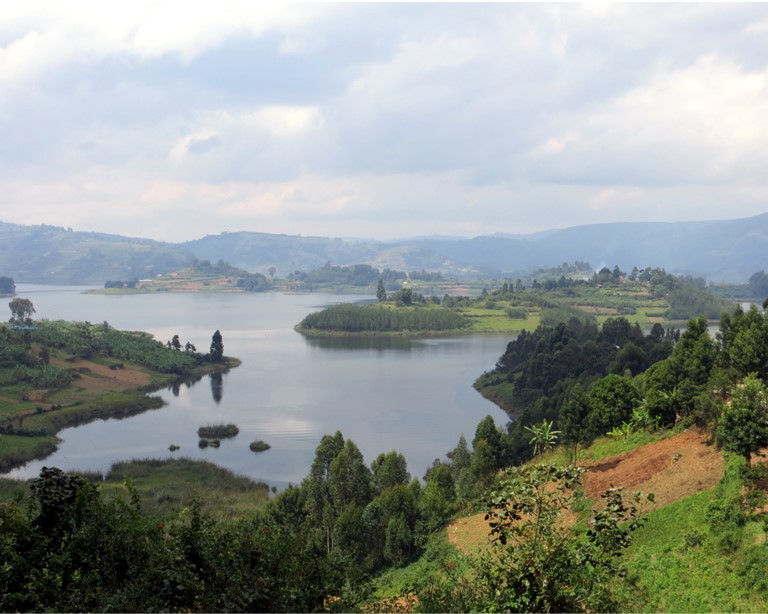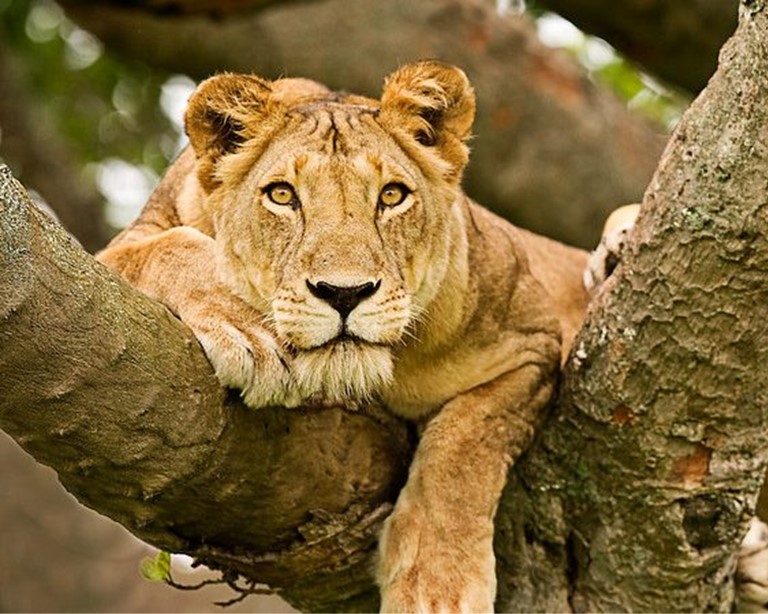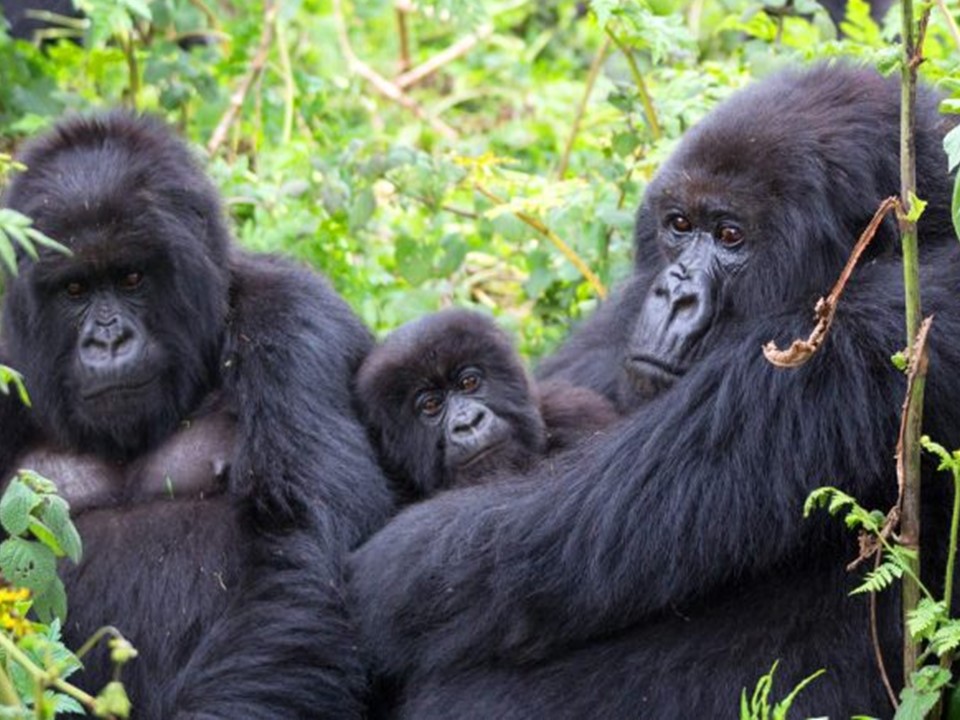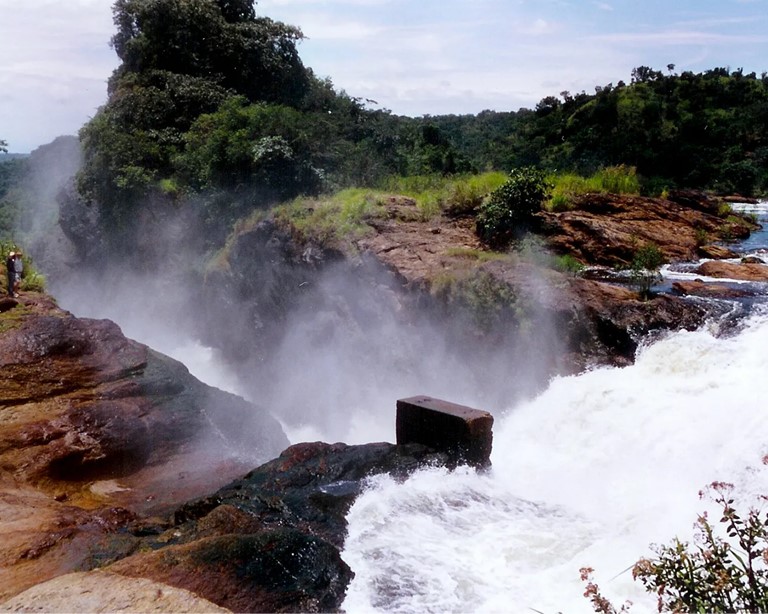Lake Bunyonyi
Lake Bunyonyi (a place of many little birds), often known as a bird paradise since it’s the home to over 200 bird species, has a contorted shore that encircles 29 islands, surrounded by steep terraced hillsides. African clawless otters and spotted-necked otters also reside at the lake. On the surrounding islands, you can find monkeys, zebras, and a variety of mammals dwelling on them.


Queen Elizabeth National Park
The park is known for its abundant wildlife, including African elephant, African buffalo, Ugandan kob, hippopotamus, topi, waterbuck, warthog, giant forest hog, Nile crocodile, leopard, spotted hyena, chimpanzee and lion. Overall, the park is home to 95 mammal species and over 600 bird species. The area around Ishasha in Rukungiri District is famous for its tree-climbing lions, whose males often sport black manes.
Bwindi Impenetrable Forest
The forest is one of the most biologically diverse areas on Earth. Half of the world’s population of the highly endangered mountain gorillas live within its borders. The forest is believed to contain 120 mammal species, 348 bird species, 220 butterfly species, and 27 frog species. Included among the mammals are forest elephants and yellow-backed duikers. While mountain gorillas are the most notable of the forest’s primates, other residents include chimpanzees, blue monkeys, L’Hoest’s monkeys, red-tailed monkeys, vervet monkeys, and black-and-white colobus monkeys.


Murchinson Falls National Park
The park is the location of the Murchison Falls, where the waters of the Nile flow through a narrow gorge only 7 meters (23 ft) wide before plunging 43 meters (141 ft). The park and the adjacent Bugondo Forest Reserve have 76 species of mammals as well as Uganda’s largest population of Nile crocodiles. There are 450 known bird species in the park, including the rare shoe-billed stork, dwarf kingfisher, Goliath heron, white-thighed hornbill, and great blue turaco.

